Discover how a bimodal integration strategy can address the major data management challenges facing your organization today.
Get the Report →Feed Bitbucket Data into FineReport
How to set Bitbucket data as a JDBC data source in FineReport.
The CData JDBC Driver for Bitbucket fully implements the JDBC standard and can provide Bitbucket data connectivity to a wide variety of BI, reporting, and ETL tools and custom applications. In this article, we explain how to set Bitbucket data as JDBC data source in FineReport and view Bitbucket data as a table in the Report Designer.
Set Up a JDBC Data Source of Bitbucket Data
Follow the instruction below to set Bitbucket data as a FineReport database connection.
- Copy the cdata.jdbc.bitbucket.jar file from the lib folder in the CData JDBC Driver for Bitbucket installation directory to the lib folder of the FineReport installation directory. You will need to copy the cdata.jdbc.bitbucket.lic file as well.
- From the Server tab, select Define Data Connection, click to add a new connection, and click JDBC.
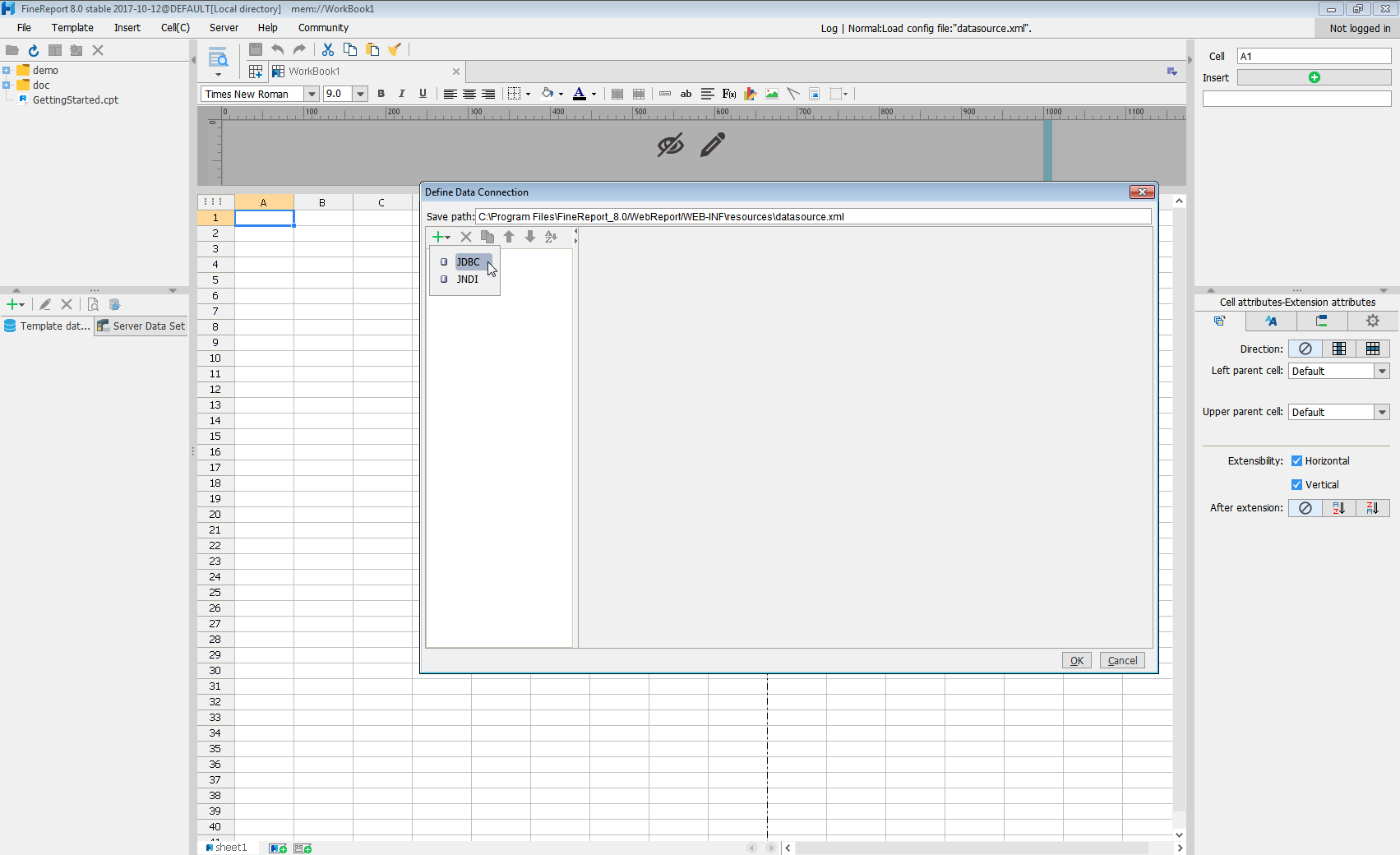
Next we will set up the data connection definition in the window.
- Database: Others
- JDBC Driver: cdata.jdbc.bitbucket.BitbucketDriver
-
URL: A standard JDBC connection string using semicolon-separated connection properties.
For most queries, you must set the Workspace. The only exception to this is the Workspaces table, which does not require this property to be set, as querying it provides a list of workspace slugs that can be used to set Workspace. To query this table, you must set Schema to 'Information' and execute the query SELECT * FROM Workspaces>.
Setting Schema to 'Information' displays general information. To connect to Bitbucket, set these parameters:
- Schema: To show general information about a workspace, such as its users, repositories, and projects, set this to Information. Otherwise, set this to the schema of the repository or project you are querying. To get a full set of available schemas, query the sys_schemas table.
- Workspace: Required if you are not querying the Workspaces table. This property is not required for querying the Workspaces table, as that query only returns a list of workspace slugs that can be used to set Workspace.
Authenticating to Bitbucket
Bitbucket supports OAuth authentication only. To enable this authentication from all OAuth flows, you must create a custom OAuth application, and set AuthScheme to OAuth.
Be sure to review the Help documentation for the required connection properties for you specific authentication needs (desktop applications, web applications, and headless machines).
Creating a custom OAuth application
From your Bitbucket account:
- Go to Settings (the gear icon) and select Workspace Settings.
- In the Apps and Features section, select OAuth Consumers.
- Click Add Consumer.
- Enter a name and description for your custom application.
- Set the callback URL:
- For desktop applications and headless machines, use http://localhost:33333 or another port number of your choice. The URI you set here becomes the CallbackURL property.
- For web applications, set the callback URL to a trusted redirect URL. This URL is the web location the user returns to with the token that verifies that your application has been granted access.
- If you plan to use client credentials to authenticate, you must select This is a private consumer. In the driver, you must set AuthScheme to client.
- Select which permissions to give your OAuth application. These determine what data you can read and write with it.
- To save the new custom application, click Save.
- After the application has been saved, you can select it to view its settings. The application's Key and Secret are displayed. Record these for future use. You will use the Key to set the OAuthClientId and the Secret to set the OAuthClientSecret.
Built-in Connection String Designer
For assistance in constructing the JDBC URL, use the connection string designer built into the Bitbucket JDBC Driver. Either double-click the JAR file or execute the jar file from the command-line.
java -jar cdata.jdbc.bitbucket.jarFill in the connection properties and copy the connection string to the clipboard.
![Using the built-in connection string designer to generate a JDBC URL (Salesforce is shown.)]()
When you configure the JDBC URL, you may also want to set the Max Rows connection property. This will limit the number of rows returned, which is especially helpful for improving performance when designing reports and visualizations.
A typical JDBC URL is below:
jdbc:bitbucket:Workspace=myworkspaceslug;Schema=Information - Click Connection pool attributes and set Test before getting connections to No.
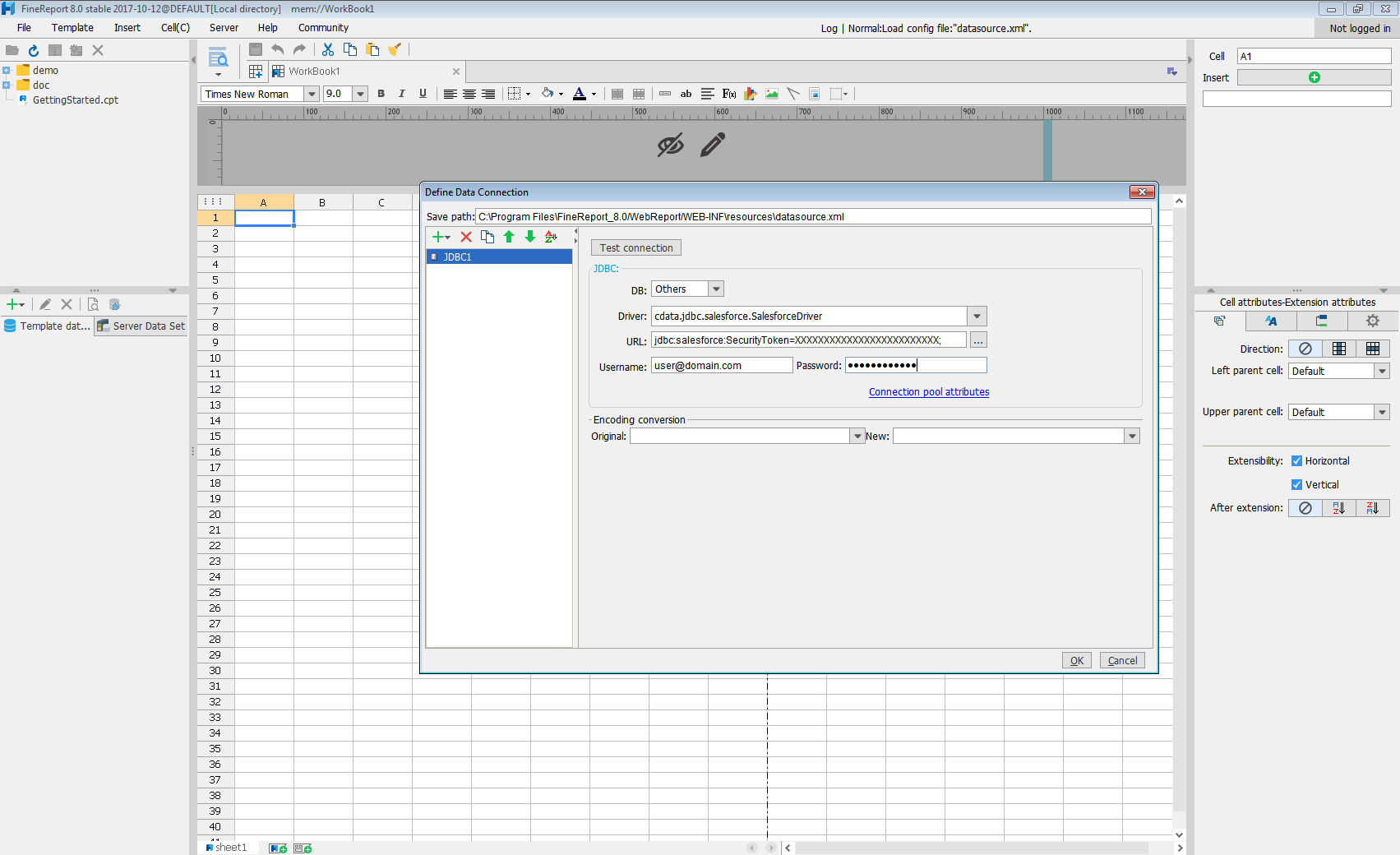
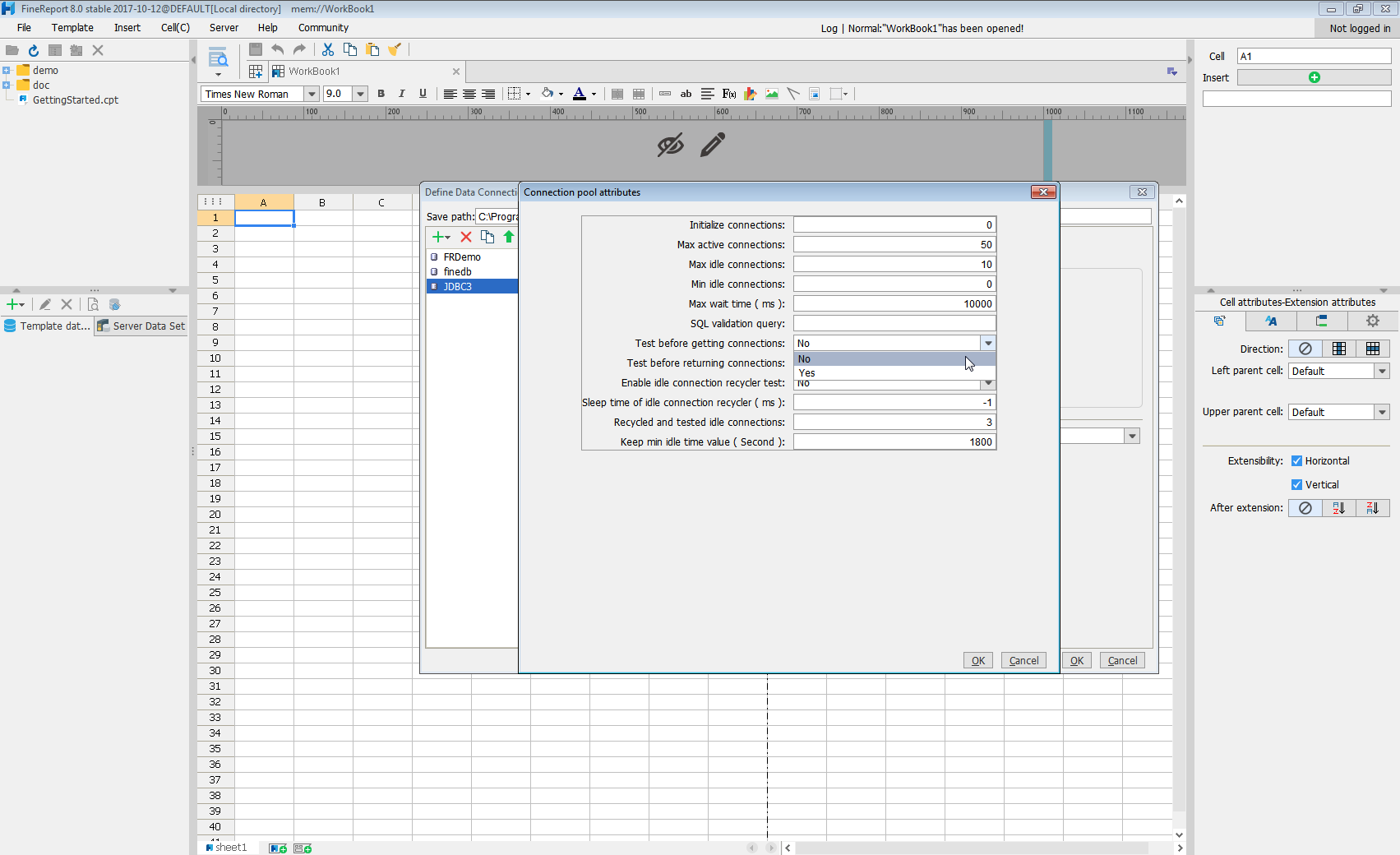
Click Test connection to ensure you have configured the connection properly. With the connection to Bitbucket set up, you can use it as FineReport data source.
Select Bitbucket Data in the Report Designer.
- Click to add a new template data set and select DB query to open the database query window.
- Choose the JDBC connection that you created from the dropdown list.
- The Bitbucket entities will appear as tables on the left pane.
- Write a SELECT statement for the Bitbucket data tables and columns that you want to load.
- Click preview and data is shown as table.
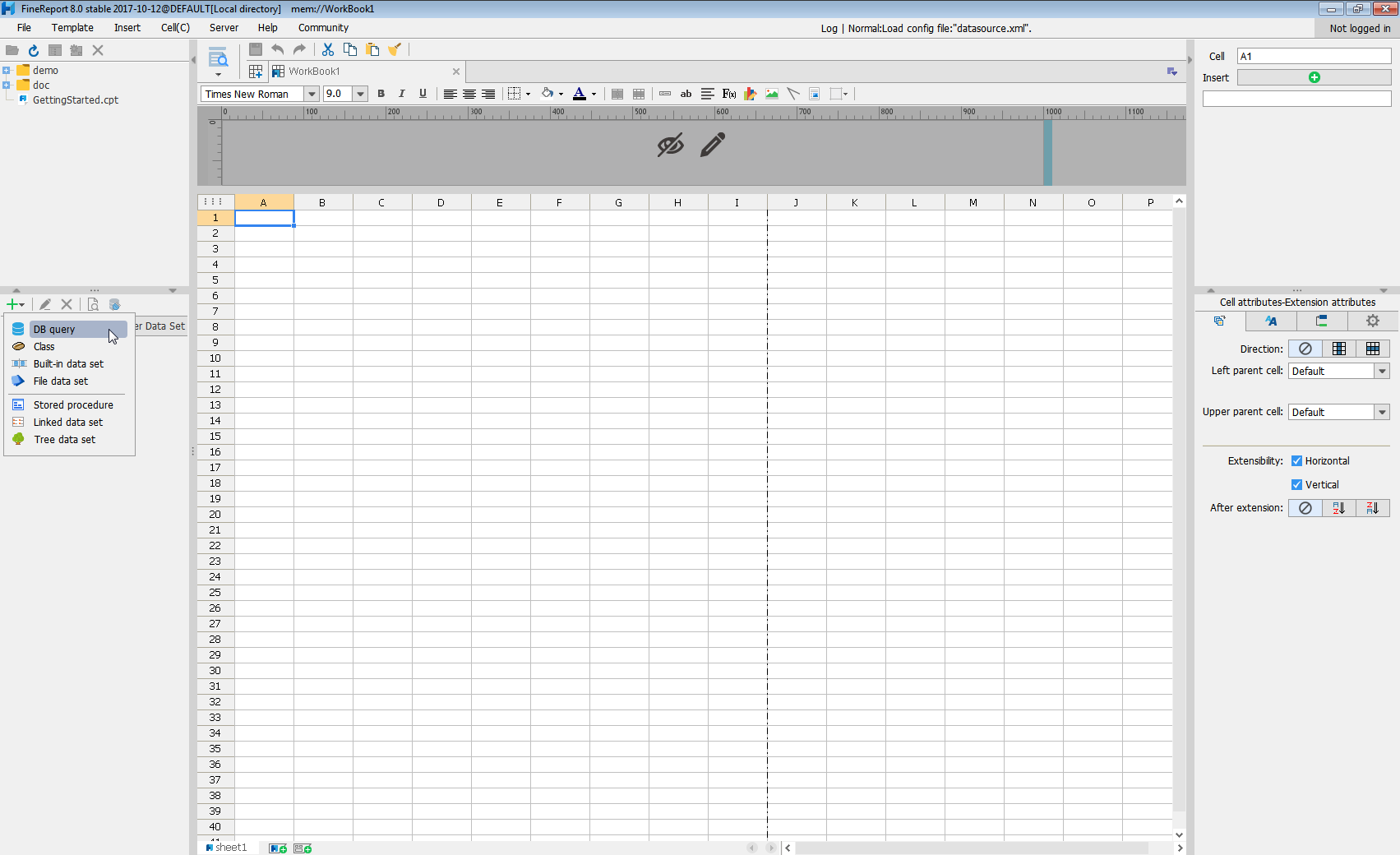
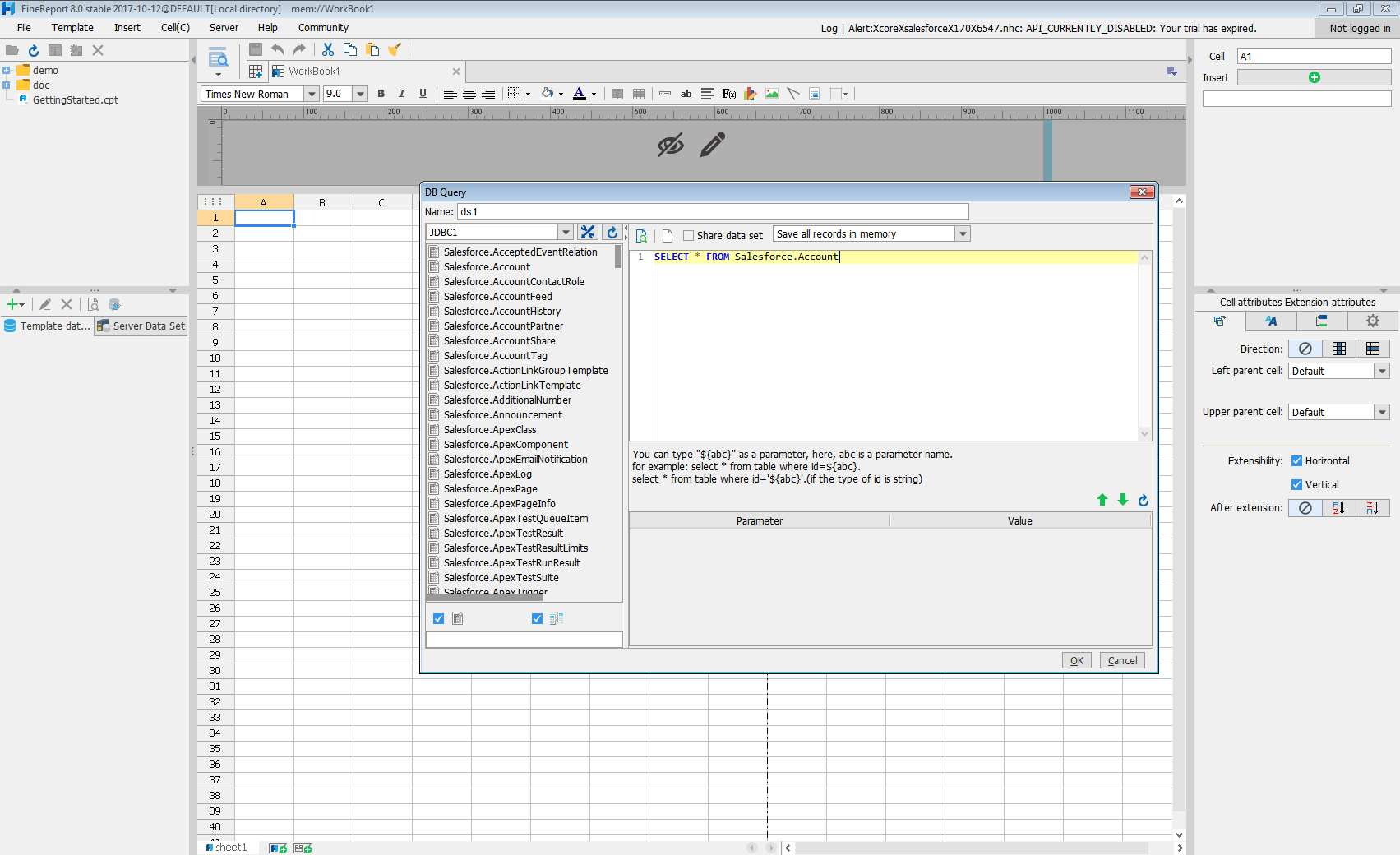

With these simple steps, Bitbucket can be used as a JDBC data source in FineReport.






